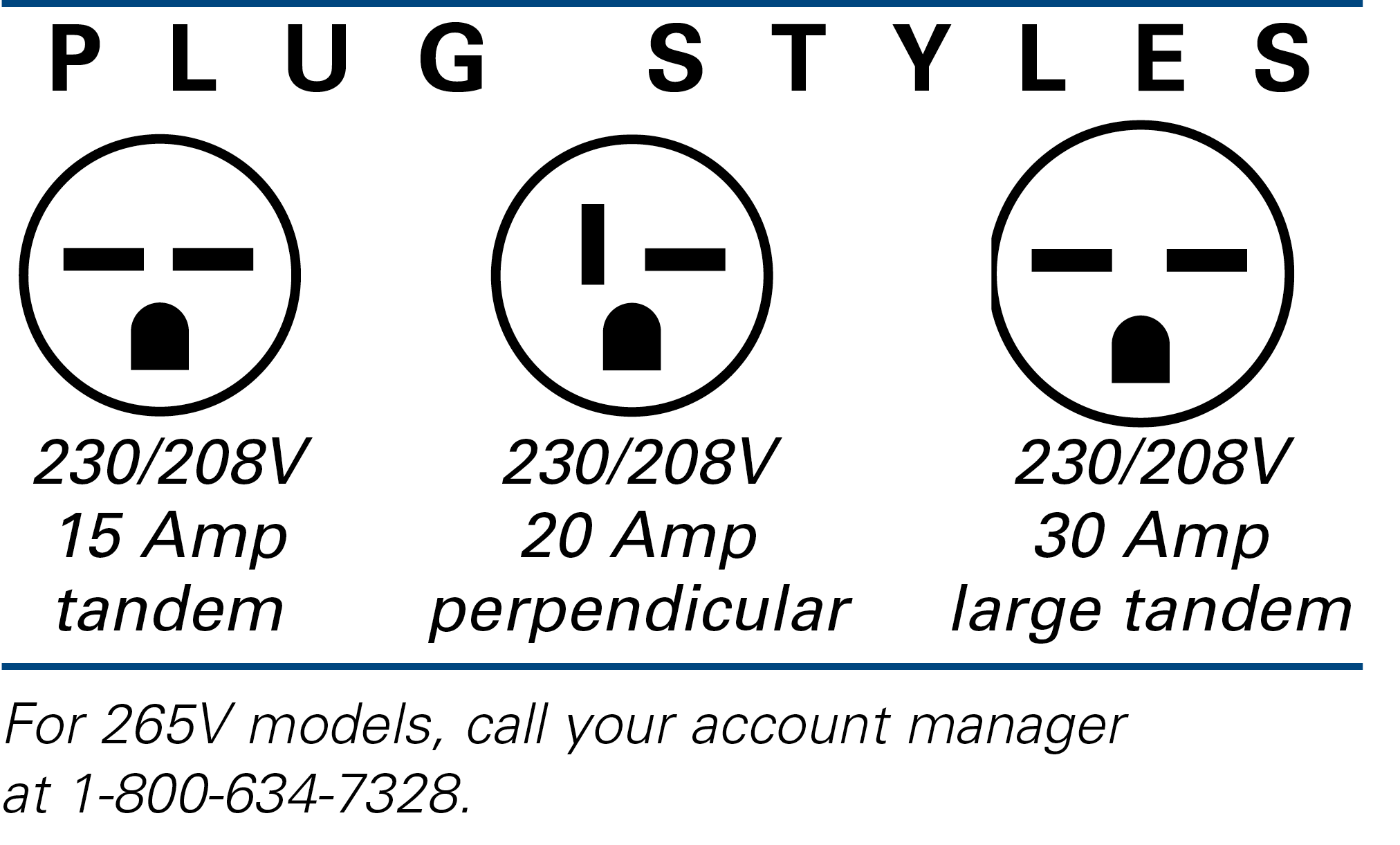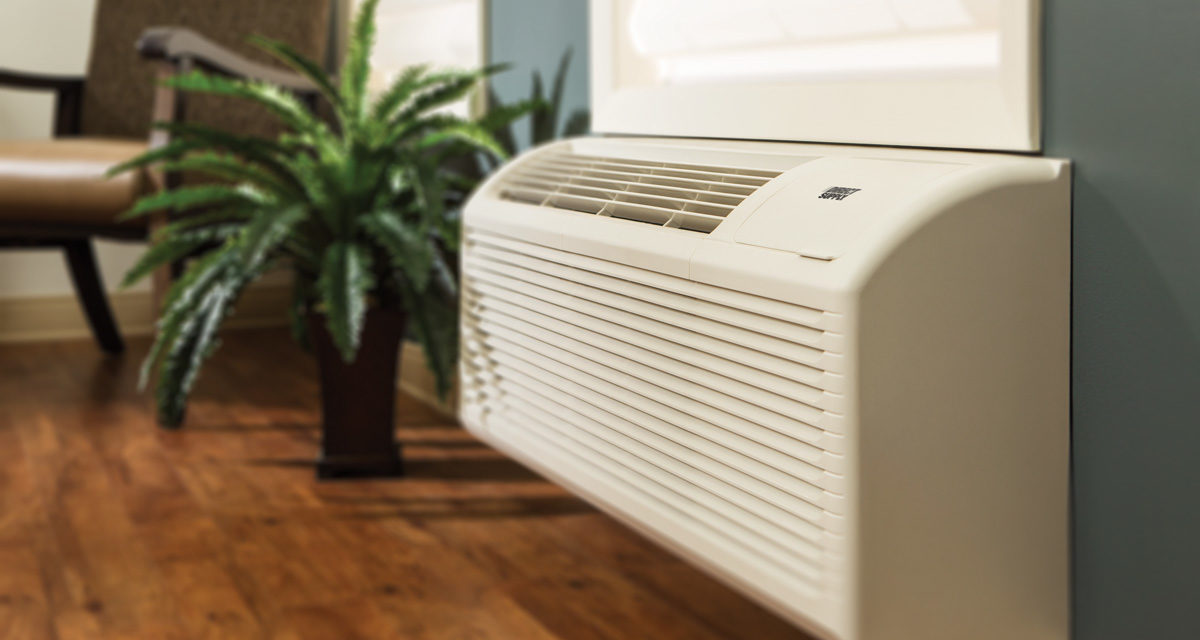Thousands of Senior Living communities rely on PTACs (Packaged Terminal Air Conditioners) to maintain comfortable rooms for their residents. But with so many options, how can you choose the right unit to fit your space, climate, facility type and resident needs?
Below are some guidelines we use when helping our customers select the best PTAC units for their community:
1. Select the right type
PTACs are available in both heat pump and resistance heat models to heat and cool Senior Living community rooms. Here are the differences between a PTAC heat pump vs: an electric resistance heat unit:
Resistance (Electric) Heat – Resistance heat units work by passing an electric current through wires to heat them, much like a toaster or hair dryer works. They require a smaller initial investment but can result in higher energy costs when used for prolonged periods of time.
Heat Pump – PTAC Heat pump units work in a similar manner to an air conditioner, except by reversing the cooling process to circulate warm air. Heat pumps are highly efficient PTAC units and use less energy than resistance heat models but require a larger initial investment. All heat pump units also incorporate resistance heat technology that can help maintain room temperature when the outside temperature drops below the minimum operating threshold for a heat pump.
Heat pump units are suggested for cooler climates where the need for heat is greater; you’ll see a return on the initial higher investment in about a year. All climate zones within the U.S. will realize some energy cost savings by choosing a heat pump model, but the payback will vary by location.

2. Select the right size
Estimate the right BTU for your PTAC by multiplying the square footage of the room your unit will be located in times 30 (ex: 300 sq. ft. x 30 = 9,000 BTU unit). It also helps to consider the number of people who will occupy the room, ceiling height, insulation and the impact of outside weather, especially how much sunlight the room receives to determine the correct PTAC setting.
The below PTAC sizing chart offers the estimated BTU needed by square footage.
|
Room Area in Square Feet |
PTAC BTU Needed |
|
250-300 sq. ft. |
7500-9000 BTU |
|
300-350 sq. ft. |
9000-10,500 BTU |
|
350-400 sq. ft. |
10,500-12,000 BTU |
|
400-450 sq. ft. |
12,000-13,500 BTU |
|
450-500 sq. ft. |
13,500-15,000 BTU
|
We recommend contacting an HVAC professional for help evaluating your specific PTAC air conditioning needs.
3. Select the right voltage
PTAC models can have different voltage (230/208V or 265/277V) and amperage (15, 20 or 30 amps) requirements. Choose a model designed for the existing electrical service in your building.

4. Review efficiency ratings
You may be wondering “Are PTAC units energy efficient?”. For the best energy savings, consult PTAC unit reviews and ratings. Units with high energy-efficiency PTAC ratings help save energy costs. When measuring energy efficiency for a resistance heat unit, review the Energy Efficiency Rating (EER). For heat pump units, the Coefficient of Performance (COP) is the standard measure of energy efficiency. In both cases, a higher number reflects better efficiency and lower energy usage. EERs typically range from 9.2 to 13.4, while COPs typically range from 2.5 to 4.0.
5. Select the right custom options and features
Depending on your climate zone, you may need a special PTAC designed to withstand the weather and environmental conditions in the area.
Corrosion Protection Units: Along coastal regions, PTACs should have corrosion protection to combat the abundance of contaminants found in the air. Adding corrosion protection is normally significantly less expensive than replacing coils or entire units and prevents operational inefficiencies.
Dry-Air Units: Models designed to remove a higher percentage of humidity from a room are ideal for high-humidity areas.
Internal Condensate Removal Units: If you want to reduce the amount of condensation dripping out of a heat pump unit, an ICR unit is set up to collect the condensation and evaporate the moisture back into the room.
6. Select the right brand
Choose a brand with the specific features and benefits that best fit your unique PTAC needs. We offer our very own Direct Supply® PTAC as well as other industry-leading brands, such as GE®, Amana®, Friedrich and Islandaire.
Why choose Direct Supply for your PTACs?
Discovering the right PTACs for your community can be more complicated than it seems – daily operating expenses and projected equipment lifespans need to be considered in addition to the factors listed above. Direct Supply is here to help you maximize every dollar, offering upfront selection assistance, ongoing maintenance support and more to keep your units running better for the long haul. View our available PTAC units to provide the most energy efficient heating and air conditioning for your resident rooms.




